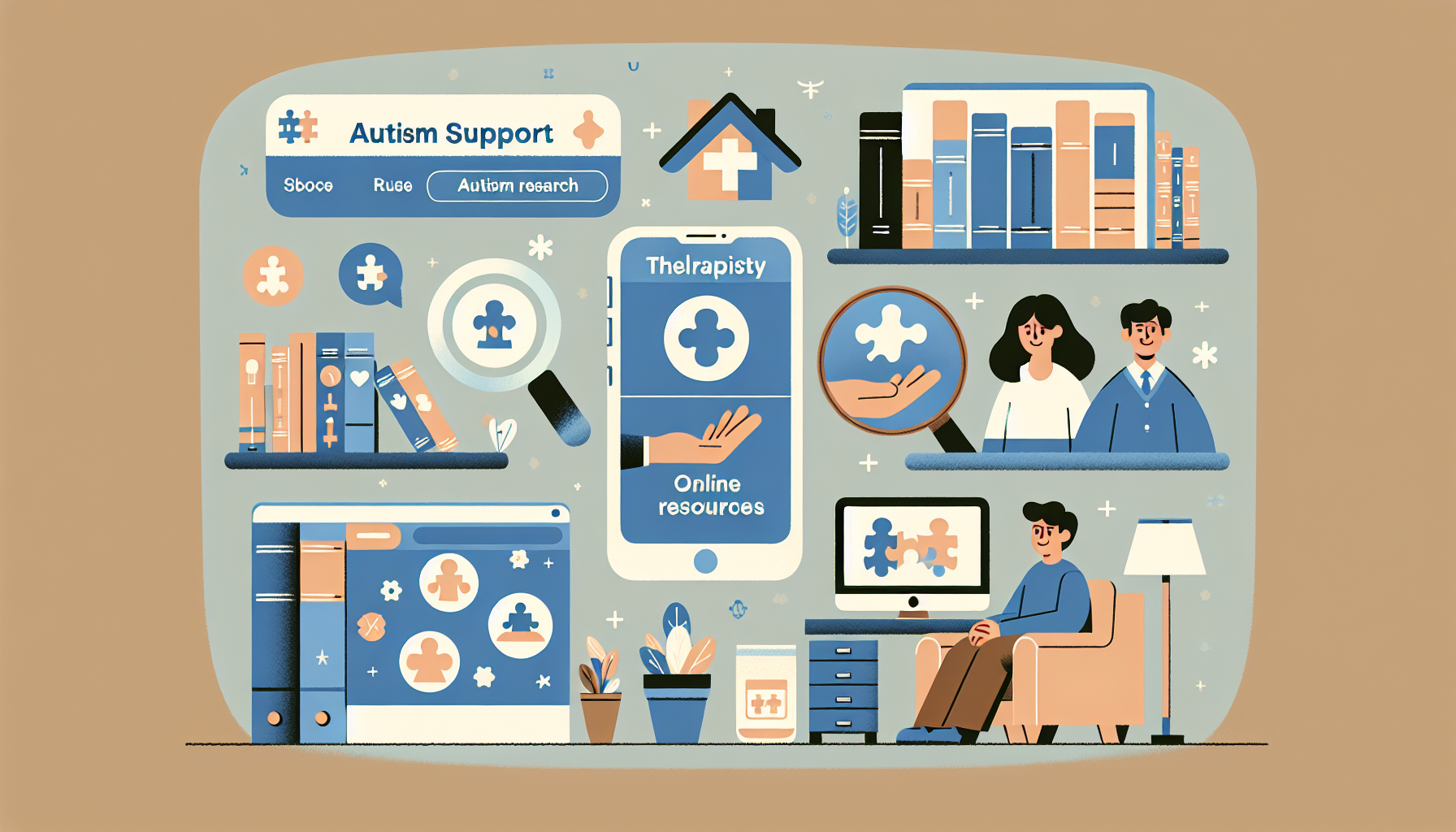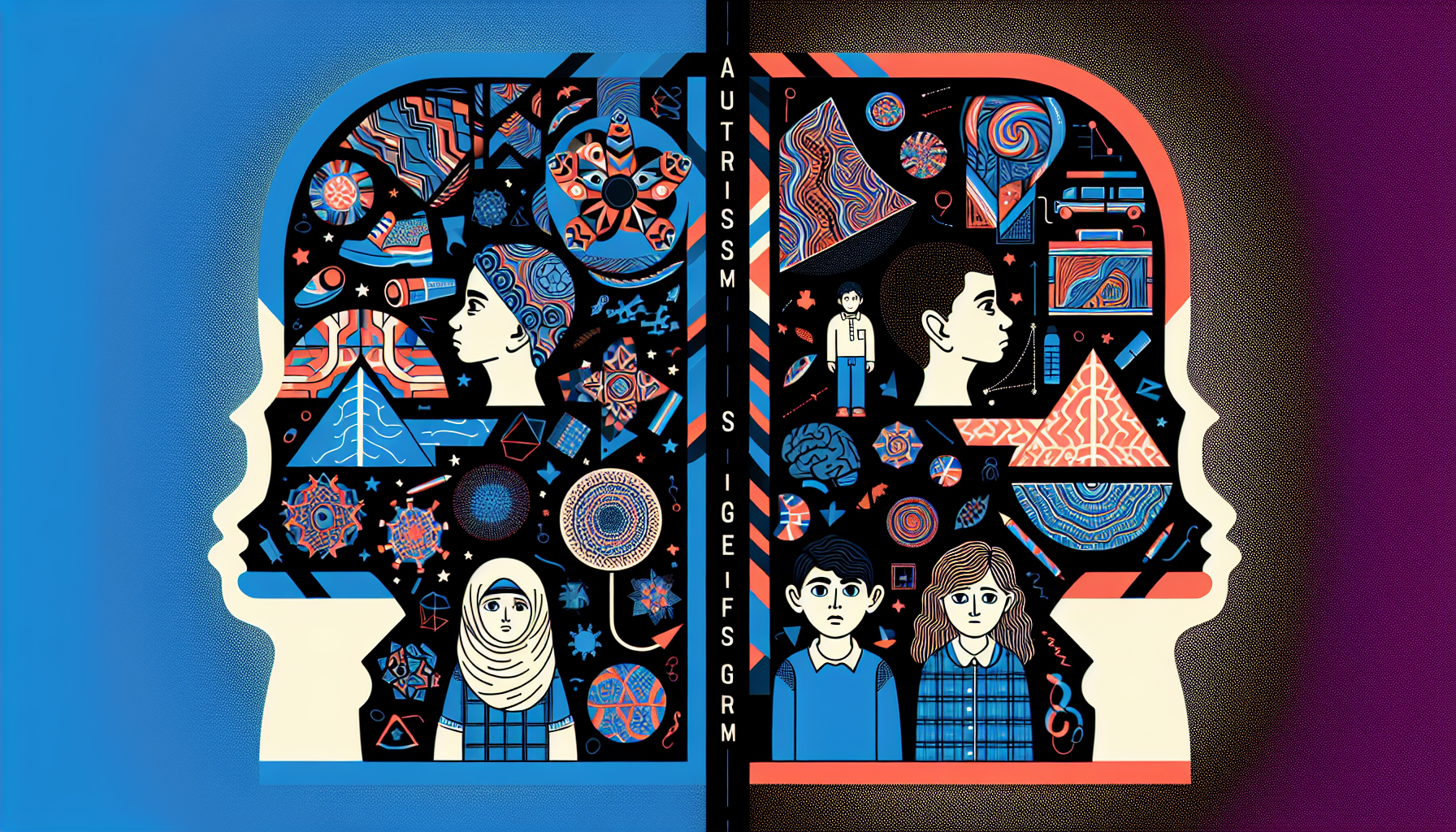Exploring Autism and Migraines/Headaches
Unveiling the connection between autism and migraines/headaches. Explore research findings, shared symptoms, and tailored treatment approaches.

Understanding the Link
Autism Spectrum Disorder (ASD) and migraines have been found to have a significant link, as supported by research findings. Understanding this connection is crucial to provide comprehensive care for individuals with autism who also experience migraines or headaches.
Research Findings on Autism and Migraines
Numerous studies have shed light on the relationship between autism and migraines. A study conducted by Sullivan and colleagues in 2014 found a significant link between the presence of migraines in individuals with ASD and sensory hyperactivity in children. This study suggested that autistic children who are overreactive to sensory input may also exhibit anxiety behaviors and experience migraine headaches.
Another study conducted in 2019 involved 105 autistic adults and 76 adults without ASD. The findings revealed that the rate of migraines was higher in autistic individuals (42.7%) compared to those without ASD (20.5%) [2]. These findings suggest that there may be a higher prevalence of migraines among individuals on the autism spectrum.
Prevalence of Migraines in Autistic Individuals
Investigating the prevalence of migraines in autistic individuals, a study from 2014 examined the medical charts of 12 male and 6 female children who visited a neurology clinic. The researchers found that 61% of these children experienced migraine headaches, indicating a possible higher prevalence of migraines in autistic children.
Autistic individuals commonly exhibit heightened reactions to sensory stimuli due to sensory sensitivities. In the same 2014 study, researchers found that those who experienced migraine headaches also tended to have more anxiety and sensory sensitivity symptoms compared to those without migraines. This suggests a potential link between sensory sensitivities, anxiety, and migraines in autistic children.
Understanding the research findings and prevalence of migraines in autistic individuals is crucial for healthcare professionals, educators, and caregivers. By recognizing and addressing the association between autism and migraines, tailored approaches can be developed to manage and alleviate the symptoms experienced by individuals at this intersection.
Factors Contributing to the Connection
The connection between autism and migraines/headaches can be influenced by various factors. Understanding these factors can provide insights into the underlying mechanisms and help inform treatment approaches. Three key factors contributing to the connection between autism and migraines are sensory hyperactivity, anxiety coexistence, and genetic susceptibility.
Sensory Hyperactivity and Migraines
Sensory hyperactivity, a common characteristic of autism, refers to heightened reactions to sensory stimuli due to sensory sensitivities. A study conducted by Sullivan et al. in 2014 found a significant link between the presence of migraines in individuals with Autism Spectrum Disorder (ASD) and sensory hyperactivity in children. It suggests that autistic children who are overreactive to sensory input may also exhibit anxiety behaviors and experience migraine headaches [1].
Anxiety and Migraine Coexistence
Anxiety is another factor that contributes to the connection between autism and migraines. Research from 2014 found that autistic children who experienced migraine headaches tended to have higher levels of anxiety than those who did not have migraines. This suggests that anxiety may play a role in the coexistence of migraines and autism.
Genetic Susceptibility in Autism and Migraines
Genetic factors also contribute to the connection between autism and migraines. A study involving 105 autistic adults and 76 adults without ASD found that autistic participants had a higher rate of migraines (42.7%) compared to those who were not autistic (20.5%). This indicates a possible genetic susceptibility to migraines in individuals with autism.
Understanding the factors contributing to the connection between autism and migraines can guide treatment approaches and interventions. By addressing sensory hyperactivity, managing anxiety, and considering genetic factors, healthcare professionals can develop tailored strategies to help individuals with autism effectively manage migraines and improve their overall well-being. Further research is needed to deepen our understanding of these factors and their implications for diagnosis and treatment.
Commonalities in Symptoms
When exploring the intersection between autism and migraines/headaches, it becomes evident that there are commonalities in symptoms experienced by individuals with both conditions. These shared symptoms provide insight into the potential underlying connections between autism and migraines.
Sensory Processing in Autism and Migraines
One notable commonality between autism and migraines is atypical sensory processing and sensory abnormalities. Both conditions are characterized by hypersensory and hyposensory reactivity, indicating difficulties in processing and integrating sensory information. Individuals with autism and those with migraines may experience heightened sensitivity to certain stimuli, such as light, sound, or touch. Conversely, they may also exhibit decreased sensitivity to other stimuli.
These sensory processing impairments in both autism and migraines may have genetic components. Research suggests that both conditions may share common neurochemical and neuroanatomical alterations, including changes in GABAergic signaling and volume changes in sensory regions of the brain [3]. The GABAergic signaling, which plays a crucial role in regulating sensory processing, is often affected in both autism and migraines. Structural abnormalities have also been observed in primary sensory regions, the thalamus, anterior cingulate cortex, insula, amygdala, hippocampus, and cerebellum in both conditions.
Neuroanatomical Alterations in Both Conditions
In addition to sensory processing, there are shared neuroanatomical alterations in both autism and migraines. Structural differences have been identified in various brain regions associated with sensory processing, emotional regulation, and pain modulation. These regions include the thalamus, anterior cingulate cortex, insula, amygdala, hippocampus, and cerebellum.
The presence of similar structural abnormalities suggests that there may be overlapping mechanisms underlying both conditions. However, it is important to note that the exact relationship between these neuroanatomical alterations and the development of autism and migraines is still being studied.
By recognizing the commonalities in symptoms, such as sensory processing impairments and neuroanatomical alterations, we gain a better understanding of the potential connections between autism and migraines. Further research is needed to unravel the complex interplay between these conditions and explore how these shared features may contribute to their co-occurrence.
Managing Migraines in Autism
When it comes to managing migraines in individuals with autism, a tailored approach is essential. The treatment strategies should consider the type of headache and take into account any existing medications or supplements. It is crucial to consult with all prescribing clinicians before considering prescription migraine medication or nutritional supplements.
Tailored Treatment Approaches
Treatment for headaches in autistic individuals may vary depending on the type of headache and other prescribed medications or supplements. It is recommended to consult with all prescribing clinicians to ensure the most appropriate management approach. This collaborative effort helps to consider any potential interactions or contraindications with existing treatments.
Lifestyle and Dietary Recommendations
In addition to medical interventions, certain lifestyle and dietary changes can play a role in managing migraines in autistic individuals. The American Migraine Foundation advises the following lifestyle and dietary recommendations:
- Eating small, balanced meals at regular intervals: Maintaining a consistent eating schedule can help stabilize blood sugar levels, which may contribute to migraine prevention.
- Regular sleep and exercise schedule: Establishing a routine for sleep and exercise can promote overall well-being and potentially reduce the frequency and severity of migraines.
- Avoiding trigger foods: Certain foods have been identified as potential migraine triggers. It is advised to limit or avoid processed or fried foods, chocolate, artificial sweeteners, and foods with nitrates and nitrites.
- Limiting caffeine and alcohol intake: Caffeine and alcohol, particularly red wine and beer, can trigger migraines in some individuals. Reducing consumption or avoiding these substances may be beneficial.
- Keeping a food diary: Maintaining a record of food intake and any subsequent migraine episodes can help identify specific triggers and guide dietary modifications.
By implementing these lifestyle and dietary recommendations, individuals with autism and migraines may potentially experience a reduction in the frequency and severity of their headaches. It is important to note that these recommendations may vary for each individual, and consulting with a healthcare professional is recommended to develop a personalized management plan.
Managing migraines in individuals with autism requires a comprehensive approach that addresses the specific needs and challenges associated with both conditions. By combining tailored treatment approaches and lifestyle modifications, individuals can strive for better migraine management, leading to improved quality of life.
Co-Occurrence and Comorbidities
When exploring the intersection between autism and migraines/headaches, it is important to understand the co-occurrence of these conditions and their associated comorbidities. Research has shed light on the relationship between autism and migraines, as well as the common co-occurring conditions with Autism Spectrum Disorder (ASD).
Relationship Between Autism and Migraines
Multiple studies have demonstrated a significant link between the presence of migraines and Autism Spectrum Disorder (ASD). For instance, a study conducted by Sullivan and colleagues in 2014 found a strong association between migraines and sensory hyperactivity in children with ASD. The study suggested that autistic children who are overreactive to sensory input may also exhibit anxiety behaviors and experience migraine headaches [1].
In a study involving 105 autistic adults and 76 adults without ASD, researchers observed a higher prevalence of migraines among the autistic participants (42.7%) compared to those without ASD (20.5%). Additionally, a 2014 study examining the medical charts of children who visited a neurology clinic found that 61% of them experienced migraine headaches, indicating a possible prevalence of migraines in autistic children.
Common Co-Occurring Conditions with ASD
Autism Spectrum Disorder (ASD) is often accompanied by various co-occurring conditions. While migraines are one such condition, there are several others commonly observed in individuals with ASD. Some of the most frequently reported comorbidities include:
- Anxiety Disorders: Research has found that anxiety disorders are commonly observed in individuals with ASD, and there is a possible connection between anxiety and migraines in autistic children. The coexistence of anxiety and migraines may contribute to the overall challenges faced by individuals with both conditions.
- Sensory Sensitivities: Autistic individuals often exhibit heightened reactions to sensory stimuli due to sensory sensitivities. A 2014 study revealed that those who experience migraines also tend to have increased anxiety and sensory sensitivity symptoms, suggesting a possible link between sensory sensitivities, anxiety, and migraines in autistic children [2].
Understanding the relationship between autism and migraines, as well as the common comorbidities associated with ASD, can provide valuable insights for healthcare professionals and individuals seeking appropriate management strategies. Recognizing these connections can contribute to more comprehensive care and tailored treatment approaches for individuals with both conditions.
Future Research and Implications
As the understanding of the complex relationship between autism and migraines continues to evolve, there are still significant knowledge gaps and research needs that warrant further exploration. Additionally, the implications of this connection have the potential to impact both diagnosis and treatment approaches for individuals with autism and migraines.
Knowledge Gaps and Research Needs
Currently, there is a lack of substantial evidence regarding the co-occurrence and association between autism and migraines. Only a few studies have investigated this relationship, and more research is needed to establish a clearer understanding of the link [3].
To further elucidate the connection, future research should focus on exploring the shared pathophysiological changes observed in both conditions. This includes investigating neurotransmission dysregulation, immune response abnormalities, alterations in cortical minicolumn organization, gut-brain axis dysfunction, and shared susceptibility genes.
Furthermore, there is a need to investigate the specific genetic factors that contribute to the association between autism and altered sensitivity to pain, including migraines. Altered pain candidate genes, dysfunction in the serotonin and opioid systems, and neuroinflammation are potential areas of interest for future studies.
Potential Impact on Diagnosis and Treatment
Understanding the relationship between autism and migraines can have significant implications for diagnosis and treatment strategies. By recognizing the co-occurrence of these conditions, healthcare professionals can adopt a more holistic approach when evaluating and managing individuals with autism.
When diagnosing individuals with autism, it is crucial for healthcare professionals to be aware of the potential presence of migraines or headaches. This knowledge can help ensure comprehensive assessments and appropriate management plans are put in place. By considering the potential impact of migraines on an individual's overall well-being, healthcare providers can develop tailored treatment approaches that address both autism and migraines simultaneously.
In terms of treatment, a better understanding of the connection between autism and migraines may guide the development of more effective interventions. Treatment plans can be customized to address sensory hyperactivity, anxiety, and genetic susceptibility factors that contribute to both conditions. Additionally, lifestyle and dietary recommendations can be refined to minimize triggers and optimize overall health.
It is important for clinicians, researchers, and advocacy groups to collaborate in furthering research efforts and sharing findings. This collaborative approach can lead to advancements in the understanding of the link between autism and migraines, ultimately improving diagnostic accuracy, treatment outcomes, and the overall well-being of individuals affected by these conditions.




































































































